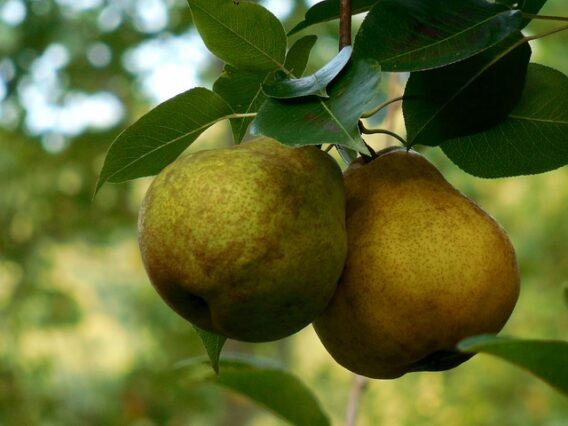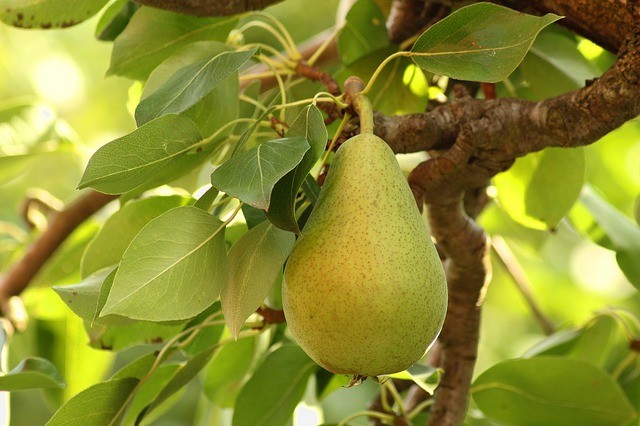There’s nothing quite like sinking your teeth into a juicy, ripe pear, and they taste even better when they are from your own garden. Newly planted trees may take a while to bear a decent crop, but once established a well looked after pear tree can produce fruit for many years.

Pear Tree Varieties
There are a lots of varieties of pear, but the most common are dessert varieties, such as Conference, Doyenne de Comice and Williams.
Pear Tree Pollination
Pear trees need to be cross-pollinated to bear fruit, so for a good yield you are likely to need two varieties of tree that flower at the same time, so that the wind or insects can transfer pollen from one to the other.
Pear Tree Rootstocks
Pear trees come in a variety of rootstocks that determine how big the tree will grow. The tree (scion) is grafted onto the roots (stock) of another plant, and the size it will grow to should be listed on the plant label. This makes it much easier to choose the right tree for your garden.
See dwarf pear trees, as well as larger rootstocks at Thompson & Morgan.
Planting Pear Trees
Pear trees are often sold as bare rooted, root-balled choose a sunny position that is protected from the wind. Bare rooted trees should be planted between autumn and spring, and container grown trees can be planted at any time of the year. Pear trees like a fertile, loamy soil that holds its moisture.
Prepare the soil in advance by adding some organic fertiliser or well-rotted manure. Dig a hole so that the roots can spread and grow comfortably. Plant the tree so that the join where the stock has been grafted onto the scion is no less than 4 inches/10cm above the level of the soil. Once in position, back fill with soil and support with a tree stake.

Caring for Pear Trees
Keep pear trees well-watered during the first growing season, and in dry weather. Apply a mulch during spring to help retain the moisture in the soil.
Pear trees should be pruned to encourage the growth of strong branches, and good yield of fruit, by removing old, dead or diseased branches, or branches that crowd, or do not conform to the overall shape you want to achieve.
There are a variety of tree shapes, such as bush, dwarf pyramids, cordons and espaliers, and you can choose a shape that is right for the size of your garden and the position of the tree. Pruning can be done in late summer for dwarf pyramids, espaliers and cordons, and in winter for the more naturally shaped bush trees.
Harvesting and Storing Pears
Pears ripen in late summer to autumn, and some varieties may be earlier than others. Store in a cool place, and so that they do no touch each other. When the fruit begins to soften, it is ready to eat.
